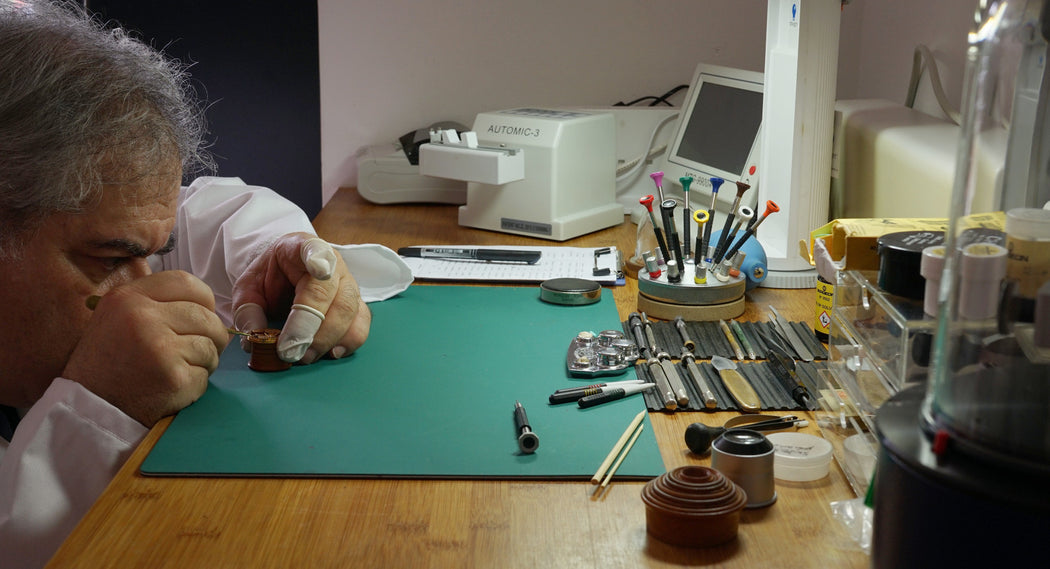Most buyers are interested whether they say so or not in the potential accuracy of the watch they are thinking of buying or having serviced.
If you have discussed this subject with me on the phone you will know that I tend to ramble on a bit about the timekeeping capability of the Smiths English watches.
All the High end products came with factory certificates stating that they had been positionally tested over several days. As some of you know I tend to say that they were probably hung up on a nail and laid down on a tray as shown on some factory pictures, although these may well have been the pin pallet watches.
The truth's somewhere out there but I think we have to think along the lines of the watches being positionally tested initially perhaps on either in the early period an oscilloscope or latterly maybe on a more modern machine, then tested in trays for observation and further adjustment.
The alternative is that there was a whole department with observatory style testing which I don't believe.
The 19th century testing by Kew was obviously proceeded by conscientious adjustment and Smiths correspondence to clients as seen in their catalogues backs this up, but the post war wristwatch would have brought a new generation problems with it.
The earlier wristwatch civilian production pieces have a relatively crude regulator index finger, and the balances are also prone to having been filed to adjust them. These can be timed but take ages to get anywhere near right.
As things moved forward it becomes clear that JWB opted for a more refined balance assembly in some if not all of their watches. These were sold by JWB as their finest English lever wristwatch so perhaps they felt that a better attention to detail was warranted.
Some of the Smiths balances appear to be a different nickel plated finish, I am tending towards the fact that these may have been perhaps intended for some of the Smiths line of DQ Tropical cased watches although they are found throughout the range.
It is certain that the balance assemblies were poised in factory and this makes the replacement of the hairspring or roller without further adjustment futile. When watches have been used over many years or been subject to much work it is often the case that we can only adult for an average positional time and these may need re-adjustment depending on how this works out in the real world.
Our own experience with watch testing after servicing is that the modern timing machines are way too sophisticated and that the time taken when using a machine with a comprehensive readout has lengthened considerably. The old Vibrograf B200 is probably the best way to test to the original specifications as you won't get too hung up on beat accuracy and amplitude. Some of the movement especially the Imperial 19 jewel can show very poor amplitude compared to a Swiss movement.
The result of all the above is that the movements are currently tested by us in either five or three positions depending on their capability and age, and then like Smiths perhaps, laid in trays and adjusted as necessary over a period of days.
Although most of the Smiths we service are initially adjusted to within a theoretical few seconds a day, they seem to settle down over a period of time to what I hope is an acceptable accuracy of a couple of minutes a day. I tend to feel that this is due to the relatively crude escapement compared to a Swiss lever, everything is bigger and no doubt the pivots settle within the jewels gradually over an extended period, affecting the eventual timekeeping. Obviously we are more than happy to re-regulate over a period of time a customers serviced watch at a later date, and welcome rather than view as a nuisance customers' communications with regards to performance post servicing.
